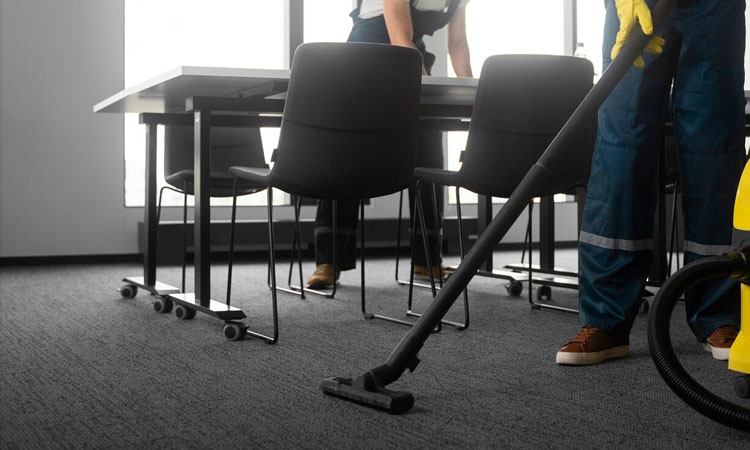Microplastics in the Air We Breathe: Why Indoor Monitoring Matters
Every day, we unknowingly inhale thousands of microscopic plastic particles. These airborne microplastics—tiny fragments from degraded plastics, synthetic fibers, and everyday products—pose a growing threat to human health. A recent study estimates that humans inhale up to 70,000 microplastic particles per day in typical indoor environments¹. The situation is even more intense in enclosed spaces like cars, where microplastic concentrations can reach 2,238 particles per cubic meter, with 94% of them smaller than 10 micrometers—small enough to penetrate deep into the lungs².
The Hidden Threat Indoors
Indoor air typically contains 8 times more airborne microplastics than outdoor environments³. This is due to common household items—such as carpets, curtains, furniture, and even synthetic clothing—slowly breaking down and releasing plastic particles into the air. These particles become suspended in household dust and can remain airborne for extended periods, especially in poorly ventilated rooms.
The problem extends beyond homes. Offices, schools, gyms, and vehicles also act as microplastic hot zones. The constant shedding from electronics, furnishings, and synthetic materials creates a near-invisible cloud of plastic particles that we breathe in daily.
Health Risks of Breathing Plastic
Microplastics and nanoplastics can easily enter the body through inhalation. Recent research links these particles to respiratory inflammation, digestive issues, hormonal disruption⁴. Nanoplastics—particles smaller than 1 micrometer—are especially dangerous because they can cross biological barriers and accumulate in critical organs such as the brain, lungs, and reproductive system⁵.
Moreover, many microplastics contain chemical additives like phthalates and bisphenol A (BPA), which have been shown to interfere with hormonal and immune systems⁶. While more long-term studies are needed, current evidence strongly suggests that regular exposure—especially indoors—poses a real and escalating health concern.
Where HibouAir Fits In
Although HibouAir doesn’t directly detect microplastic particles by type, it provides accurate, real-time monitoring of particulate matter (PM1.0, PM2.5, PM10)—size categories that include most microplastic fibers and fragments. By identifying particle concentration spikes in the air, HibouAir helps users recognize when conditions are likely contributing to higher microplastic exposure.
In addition to PM data, HibouAir also tracks CO₂, VOCs (Volatile Organic Compounds), temperature, humidity, and more. These environmental indicators offer important context: high humidity and stagnant air, for instance, can encourage microplastic particles to stay airborne longer, increasing the likelihood of inhalation.
HibouAir’s platform includes mobile application, and cloud-based dashboards that allow users to review air quality trends, set thresholds, and receive alerts—making it easier than ever to monitor and improve the air in homes, classrooms, and workplaces.
Simple Steps Toward Cleaner Air
Experts recommend minimizing microplastic exposure through better indoor hygiene, natural materials, and air filtration. Regular vacuuming with HEPA filters, reducing synthetic fabrics and plastic packaging, and increasing ventilation all play a role. HibouAir complements these practices by providing a continuous feedback loop—helping users evaluate whether actions like opening windows or using purifiers are truly effective in reducing airborne particulate levels.
For example, one study found that indoor PM2.5 levels dropped by 58% when HEPA filters were used during wildfire events⁷. This same principle can be applied to help reduce microplastic exposure—especially since many microplastics fall within the same particle size range.
Microplastics in the air are a silent, invisible threat—and the majority of that exposure happens indoors. While we can’t see them, we can monitor the conditions that allow them to thrive. HibouAir helps users to do just that, offering the tools to monitor, respond to, and reduce the health risks of poor indoor air quality.
References
- PLOS One Study – Quantifying airborne microplastics in homes and cars
https://journals.plos.org/plosone/article?id=10.1371/journal.pone.0328011 - People Magazine Summary – 70,000 Pieces of Plastic Shed Daily from Objects in Our Homes and Cars
https://people.com/70-000-pieces-plastic-inside-homes-cars-penetrate-lungs-11782801 - ScienceAlert – The shocking amount of plastic we breathe indoors
https://www.sciencealert.com/study-reveals-the-shocking-amount-of-plastic-we-breathe-in-every-day - Health.com – Microplastics may be linked to cancer, infertility
https://www.health.com/breathing-in-microplastics-cancer-infertility-8764745 - Wikipedia – Microplastics and human health
https://en.wikipedia.org/wiki/Microplastics_and_human_health - Washington Post – How to avoid microplastics exposure indoors
https://www.washingtonpost.com/wellness/2025/07/23/microplastics-exposure-how-to-avoid - arXiv Preprint – Effectiveness of HEPA filtration on PM2.5 levels during wildfire events
https://arxiv.org/abs/2203.14140

